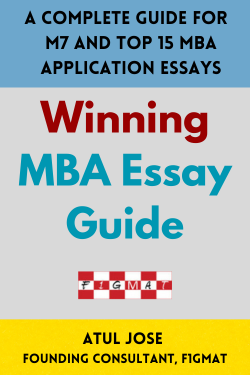In the third part of the Harvard vs. Stanford MBA Analysis, we cover Curriculum, Experiential Learning Opportunities, and Funding Options (Scholarships/Fellowships). If you have missed the first part, read - Harvard vs Stanford MBA - Cost, Class Profile & Ranking. To dive deep into the Post-MBA placement trends and the Entrepreneurial ecosystem, read the second part.
Harvard vs. Stanford MBA - Curriculum
Harvard and Stanford follow the traditional MBA format of a core curriculum in the first year of the MBA program, followed by electives in the second year.
Harvard has a compulsory experiential learning module – FIELD Immersion, which is the only major stand out difference to Stanford’s format.
Both schools share similar themes in leadership, finance, marketing, strategy, and operations. However, Stanford offers a wider range of subjects, 14 versus Harvard’s 10, as a foundation for its MBAs.
Stanford’s curriculum offers its MBA exposure to Data Analysis and Decision Making, Optimization and Simulation Modelling, and Human Resource Management in the first year. Harvard’s functional approach to the curriculum offers its MBAs different stakeholder perspectives.
Both the schools emphasize the role of government intervention and the importance of policy frameworks, which are particularly relevant in today’s age where technology is pushing these boundaries.
Harvard’s electives cover different industries such as Real Estate, Retail and Hospitality, PE/VC, Healthcare, Hollywood, Digital innovation, and Sustainability. Stanford, in contrast, focuses on different problem-solving, experimentation, analysis, marketing, and product innovation skills, instilling an entrepreneurial mindset in its MBAs through its Action Learning Programs (ALPs), an experiential learning component of the curriculum.
| Stanford MBA Core Curriculum: 14 Courses | Harvard MBA Core Curriculum: 10 Courses |
|---|---|
| Ethics | Term 1 |
| Leadership in Labs + Strategic Leadership | Finance 1 |
| Finance | Financial Reporting and Control |
| Accounting | Leadership and Organizational Behaviour (LEAD) |
| Economics | Marketing |
| Information Management | Technology and Operations Management (TOM) |
| Managerial skills and Managing Teams | Term 2 |
| Data Analysis and Decision Making | Business, Government, and the International Economy (BGIE) |
| Operations | Strategy |
| Optimization and Simulation Modeling | The Entrepreneurial Manager (TEM) |
| Human Resource Management | Finance 2 |
| Marketing | FIELD Immersion |
| Organizational Behavior | |
| Strategy Beyond Markets | |
| Stanford Elective Themes: 9 Themes | Harvard Elective Themes: 10 Themes |
| Accounting | Accounting & Management |
| Economic Analysis & Policy | Business, Government & the International Economy |
| Finance | Entrepreneurial Management |
| Human Resource Management | Finance |
| Marketing | General Management |
| Operations Information & Technology | Marketing |
| Organizational Behavior | Negotiation, Organizations & Markets |
| Political Economics | Organizational Behavior |
| Strategic Management | Strategy |
| Technology and Operations Management (TOM) |
Harvard vs. Stanford MBA - Experiential Learning
The FIELD course is part of its core curriculum, which will now provide experiential learning opportunities to its MBAs in the US.
Stanford, in contrast, offers Leadership Labs but no international experiential learning opportunity as part of its core curriculum.
In addition, Harvard also offers Immersive Field Courses (IFC), a second-year elective course that lasts longer than FIELD by a week and gives the students more autonomy on the subject area, industry and location.
IFCs have been running for the past 9 years, and 46 IFC courses have been conducted in 18 countries.
Stanford’s GMIX, an optional program for its MBAs to gain international exposure from over 80 countries, will complete 25 years. The cost of the GMIX is estimated at $5,500. Comparing the international experiential learning opportunities offered by Harvard and Stanford, Stanford emerges the clear winner with a larger offering of countries. However, Harvard’s course outcomes of contextual intelligence, team effectiveness, and design thinking metrics complement the experiential elements of its courses.
Stanford’s partnership with Tsinghua University, based in China for students offers academic and practical exposure to the international business context of Chinese firms and the Chinese economy. Since the onset of the pandemic, these courses have been held virtually till further notice.
International Learning Opportunities: Stanford > Harvard
| International Learning Opportunities | Harvard | Stanford |
|---|---|---|
| Coursework | Immersive FIELD Course (IFC) (second-year elective) | Global Management Immersion Experience (GMIX) (Optional) |
| Age of program | 9 years | 25 years |
| Regions Covered | 18 countries | 80 countries |
| Course Outcomes | Contextual intelligence, team effectiveness, and design thinking | Cultural engagement, international strategies, tactics, and write a research paper |
| Duration of program | 10-14 days | 4-weeks |
| Global Degrees | - | 1 - Stanford-Tsinghua Exchange Program (STEP) |
Related Download
Harvard vs. Stanford MBA - Funding (Scholarships & Fellowships)
Stanford provides access to financial aid and sponsorships for both domestic and international students. There are 56 nationality-based awards ranging from $6,000 up to $90,000 and 50 awards for US permanent resident students ranging between $1,000 to $15,000.
While Stanford offers need-based and merit-based scholarships, the 33 Harvard scholarships and 3 fellowships are offered only on a need basis, with the majority of Harvard financial aid in the $30,000 to $70,000 range. The average one-year scholarship reward was $40,000. Contrastingly, Stanford has a higher average reward per scholarship at $42,000 per year.
Scholarship/Fellowship Opportunities: Stanford > Harvard
| Scholarship/Fellowship | Harvard | Stanford |
|---|---|---|
| Total Opportunities | 36 | 106 |
| Type | Need-based | Merit-based & Need-based |
| Average Value (per year) | $40,000 | $42,000 |
| International Scholarship Opportunities | 16 | 50 |
| Regions Covered | UK, Spain, Nigeria, Brazil, China, Japan, Lebanon, Mexico, France, Poland, Germany, and Kuwait | Colombia, Korea, Finland, Mexico, Norway, Armenia, Peru, Belgium, Australia, India, Georgia, Italy, Canada, and Japan |
| Women | 1 (US-based) | 7 (4 international, 3 US-based) |
Harvard vs. Stanford MBA - Which is Better?
Stanford offers its MBAs a wider range of opportunities, whether it be scholarships, international learning opportunities, or entrepreneurial support to launch a new venture. The range of exposure to knowledge, functional skills, and industry experts is evident every step of the way.
Harvard’s institutional and pioneering approach through the Case study method and FIELD courses molds its MBAs for finance (investment management, investment banking) and consulting roles in which it commands superiority over Stanford.
Stanford is the clear winner for those interested in venture capital, private equity, and technology ventures, or careers in product management.
 I will teach you how to bring your life stories to essays faster with F1GMAT's essay guides. Download below or subscribe to F1GMAT's Service and work with me - Atul Jose, Author/Editor/Founding Consultant, F1GMAT(16 Years of helping applicants gain admissions to M7 and Top 30 schools)
I will teach you how to bring your life stories to essays faster with F1GMAT's essay guides. Download below or subscribe to F1GMAT's Service and work with me - Atul Jose, Author/Editor/Founding Consultant, F1GMAT(16 Years of helping applicants gain admissions to M7 and Top 30 schools) 